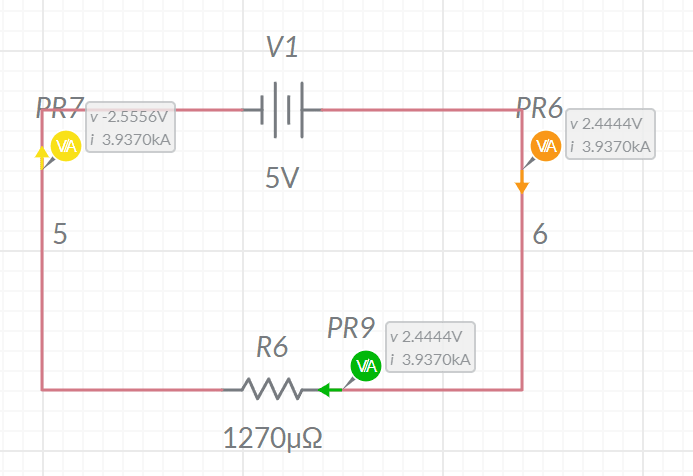Dear people,
In my education I've had basic electronics. But there is 1 thing I never understood. If i have a voltage source, let's say 5 volt, and I connect a steel or coper wire directly from the plus to the minus, what will happen? Because if u calculate the resistance of the wire its extremely low and when u apply the law of Ohm, the current will be extremely high. Is this what happens?
This also happens when using a small steel pipe. I've simulated this with a small steel pipe of length 0.2m and radius of 0.003m which has a resistance of 1270 micro-ohms. Also, why is the voltage displayed as 2.44444V?

Kind regards,
Willem
In my education I've had basic electronics. But there is 1 thing I never understood. If i have a voltage source, let's say 5 volt, and I connect a steel or coper wire directly from the plus to the minus, what will happen? Because if u calculate the resistance of the wire its extremely low and when u apply the law of Ohm, the current will be extremely high. Is this what happens?
This also happens when using a small steel pipe. I've simulated this with a small steel pipe of length 0.2m and radius of 0.003m which has a resistance of 1270 micro-ohms. Also, why is the voltage displayed as 2.44444V?

Kind regards,
Willem
